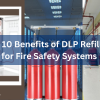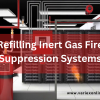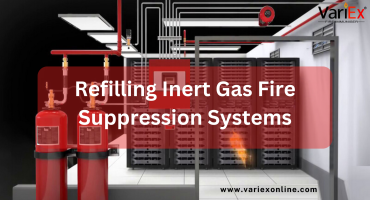![]()
Fire Immuniser
+91-7829629111
Email: info@variex.in
Varistor Technologies Pvt. Ltd.
Block-1, First Floor, Ardente Office One, Hoodi Circle, ITPL Main Road, Bengaluru, Karnataka 560048, IN
Server Room Fire Suppression System
Server rooms are critical components of modern businesses, housing essential IT infrastructure and sensitive data. Protecting these environments from fire hazards is paramount to ensure continuous operations and data integrity. Server room fire suppression systems are specially designed to detect and extinguish fires quickly and effectively, minimizing damage and downtime. Here's a comprehensive overview of server room fire suppression systems:
1. Types of Suppression Systems:
- Server room fire suppression systems typically fall into two main categories: gaseous suppression systems and water-based suppression systems.
- Gaseous suppression systems use agents like FM-200, Novec 1230, or CO2 to extinguish fires by displacing oxygen and inhibiting the combustion process.
- Water-based suppression systems include pre-action sprinkler systems, water mist systems, and foam systems, which use water or foam to suppress fires by cooling and smothering the flames.
2. Detection and Alarm Systems:
- Early detection of fires is critical in server rooms to initiate timely suppression and prevent damage to equipment and data. Fire detection systems commonly used in server rooms include smoke detectors, heat detectors, and flame detectors.
- These detection systems are interconnected with alarm systems, triggering audible and visual alerts to notify personnel of the fire and initiate evacuation procedures.
3. Design Considerations:
- When designing a server room fire suppression system, factors such as the size and layout of the room, the type of equipment housed, and the potential fire hazards must be taken into account.
- Special attention should be given to the choice of suppression agent or system to ensure it effectively suppresses fires without causing damage to sensitive IT equipment.
4. Clean Agent Suppression Systems:
- Clean agent suppression systems, such as FM-200 and Novec 1230, are commonly used in server rooms due to their non-conductive and residue-free properties.
- These systems rapidly discharge the agent to extinguish the fire while minimizing the risk of damage to electronic equipment and data.
5. Precautions and Regulations:
- Server room fire suppression systems must comply with local fire codes, regulations, and industry standards to ensure their effectiveness and safety.
- Regular maintenance, testing, and inspection of suppression systems are essential to verify proper operation and address any issues promptly.
6. Integration with Building Systems:
- Server room fire suppression systems should be integrated with building management systems (BMS) to provide centralized monitoring and control of fire detection and suppression functions.
- Integration with HVAC systems ensures that airflow is managed to prevent the spread of smoke and fire within the server room environment.
7. Training and Emergency Response:
- Proper training of personnel on the operation of fire suppression systems and emergency response procedures is crucial to ensure a swift and coordinated response in the event of a fire.
- Regular drills and exercises should be conducted to familiarize staff with evacuation routes and protocols and test the effectiveness of the suppression system.
In summary, server room fire suppression systems are essential for protecting critical IT infrastructure and data from fire hazards. By employing the right combination of detection, alarm, and suppression technologies, businesses can mitigate the risk of fire-related disruptions and safeguard their operations and assets.
Frequently Asked Questions
A fire suppression tubing system consists of flexible tubing installed in critical areas of a server room. When exposed to high temperatures from a fire, the tubing ruptures, releasing a fire suppression agent directly onto the source of the fire to extinguish it.
Fire suppression tubing systems offer rapid response, targeted suppression, space efficiency, and compatibility with sensitive electronic equipment. They provide an additional layer of protection against fire hazards in server rooms.
Fire suppression tubing systems can utilize various agents, including clean agents like FM-200 and Novec 1230, as well as water mist or foam, depending on the specific requirements and fire hazards present in the server room.
Fire suppression tubing systems are typically installed above server racks or near electrical panels, where fire hazards are most likely to occur. The tubing is secured in place using brackets or clips and connected to a central detection and release system.
Yes, fire suppression tubing systems can be integrated with existing fire detection and alarm systems to provide comprehensive fire protection. They can also be connected to central monitoring systems for remote monitoring and control.
Final Say
We at VariEx.in or Variexonline.com have mastered the art of designing, installing, inspecting, and fixing automatic sprinkler systems with the help of our in-house team, which is capable of delivering the fire sprinkler services you need, whether large or small and at affordable cost.
To schedule a fire sprinkler installation, or you think our services could benefit your commercial property, contact us online or give us a call at, 7829629111









